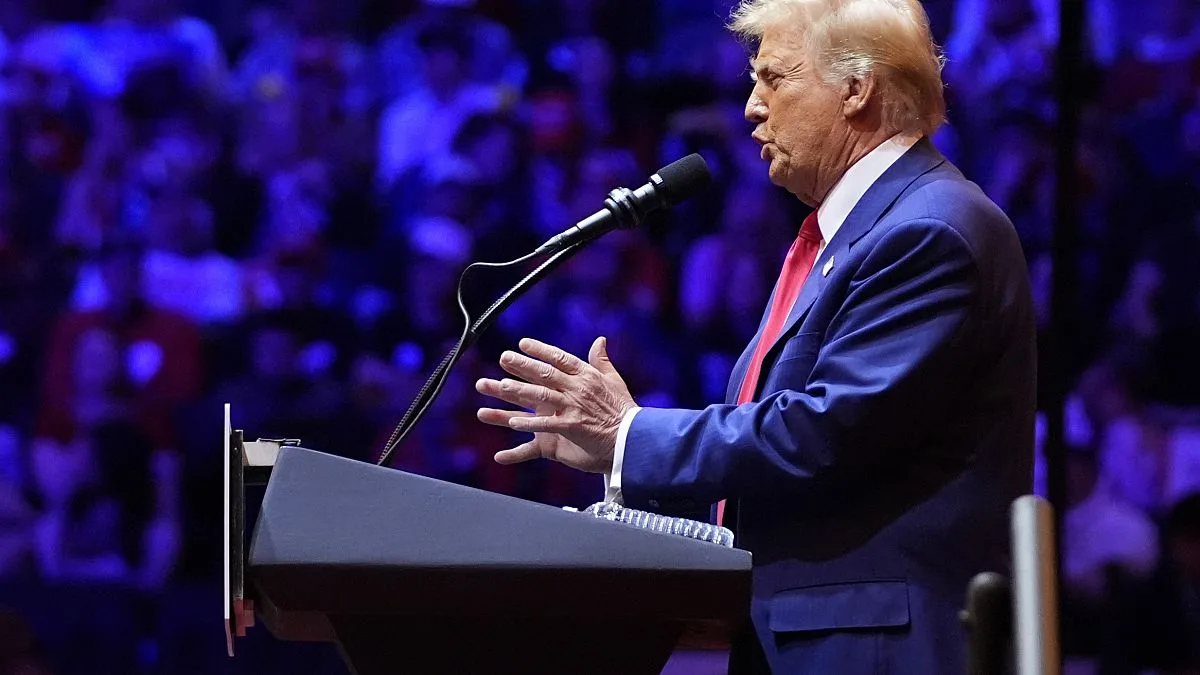Donald Trump’s proposed 10% tariff on goods exported from the European Union (EU) could significantly impact Europe’s export-driven sectors, particularly in industries like automotive and machinery. Countries such as Germany and Italy, which rely heavily on these sectors, may face economic repercussions. The potential for retaliation from the EU could further heighten tensions, jeopardizing the long-standing trade relationship between the US and the EU.
The Importance of EU Exports to the US
While China has surpassed the United States as the EU’s top goods partner, the US remains Europe’s largest trading partner when combining goods, services, and investment. In 2023, the EU exported a staggering €502.3 billion in goods to the US, accounting for one-fifth of all non-EU exports.
The EU also enjoys a net exporting status to the US, boasting a positive goods trade balance of approximately €158 billion in 2023. Major economies like Germany, Italy, and Ireland significantly contribute to this figure. Germany alone accounted for €157.7 billion in exports, with Italy following at €67.3 billion and Ireland at €51.6 billion.
Which EU Sectors Are at Risk?
Export categories leading the charge to the US include machinery and vehicles (€207.6 billion), chemicals (€137.4 billion), and other manufactured goods (€103.7 billion). Together, these categories represent nearly 90% of the EU’s total exports to America.
As reported by the European Commission, these sectors enjoyed a sizeable trade surplus in 2023 of €102 billion in machinery and vehicles and €58 billion in chemicals. Notably, medicinal and pharmaceutical products led exports with €55.6 billion, followed closely by motor vehicles at €40.7 billion and medicaments at €36.1 billion.
The automotive sector, particularly critical to Germany’s economy, could see a significant decline in demand due to price increases resulting from the tariff. This could have a domino effect, undermining jobs and further destabilizing an already sluggish sector.
If the proposed 10% tariff is enacted, various European industries may struggle for competitiveness, as rising final costs could drive US consumers toward alternative markets. The impending threat of tariffs arrives as Europe grapples with economic strain, with manufacturing output consistently on the decline for two years.
Trade Balance Implications of the Tariff
The EU’s energy trade dynamics have shifted since Russia’s invasion of Ukraine, prompting a pivot toward the US for oil and natural gas imports, which has resulted in a growing energy goods deficit of €70 billion in 2023. The introduction of a 10% tariff on EU exports may further destabilize this balance, reducing the overall trade surplus with the US and potentially hampering economic growth within the EU.
Moreover, if the dollar strengthens against the euro, the effect of tariffs could become more pronounced. The EU’s services sector faces vulnerabilities as well; in 2023, the EU registered a €104 billion deficit in services with the US, a gap that has widened each year since 2021. Although the immediate impact on services may be less than that on goods, retaliatory measures could still disrupt sectors such as finance, tourism, and professional services—core components of many EU economies.
Could There Be a European Retaliation?
If Trump moves forward with the proposed tariff, the European Commission may explore various countermeasures to safeguard its exporters, possibly including retaliatory tariffs on American goods or seeking to diversify trade partnerships to diminish dependence on the US market. However, European leaders are wary of exacerbating the situation by implementing measures that could strain their established economic ties with the US.
The prospect of retaliation could lead to production slowdowns in key export sectors, prompting some European countries to reconsider their trade strategies by forging new relationships in Asia or boosting intra-European demand for their products.
Photo credit & article inspired by: Euronews



